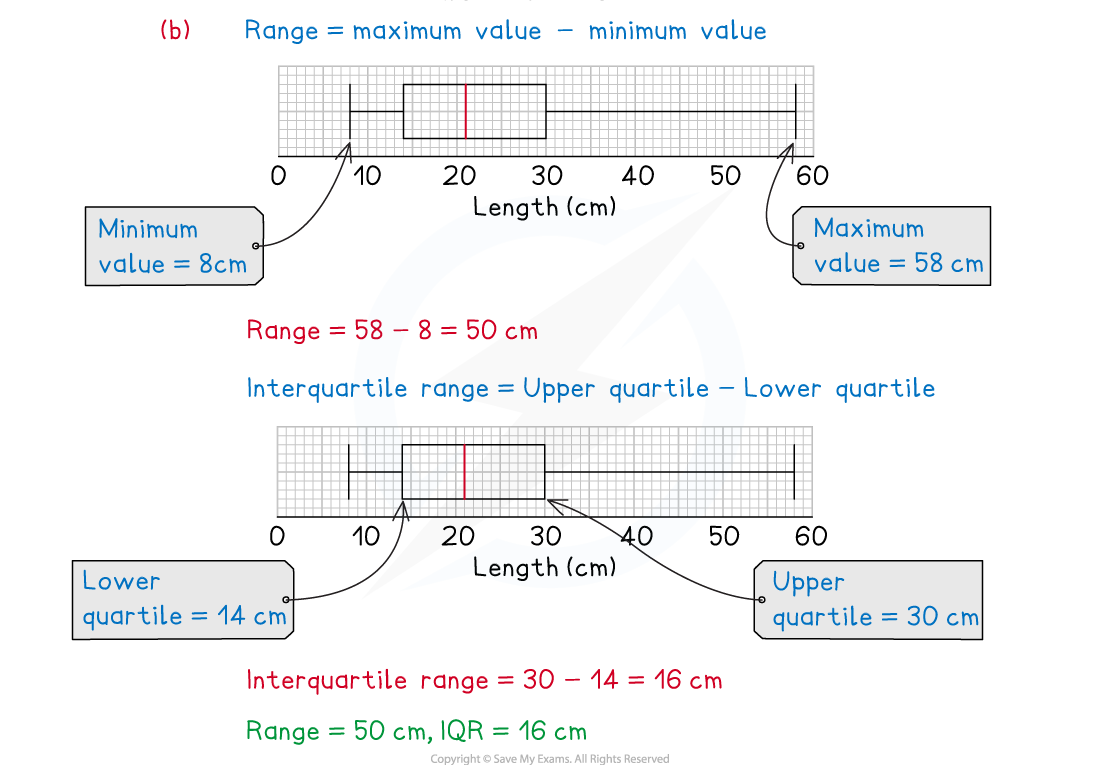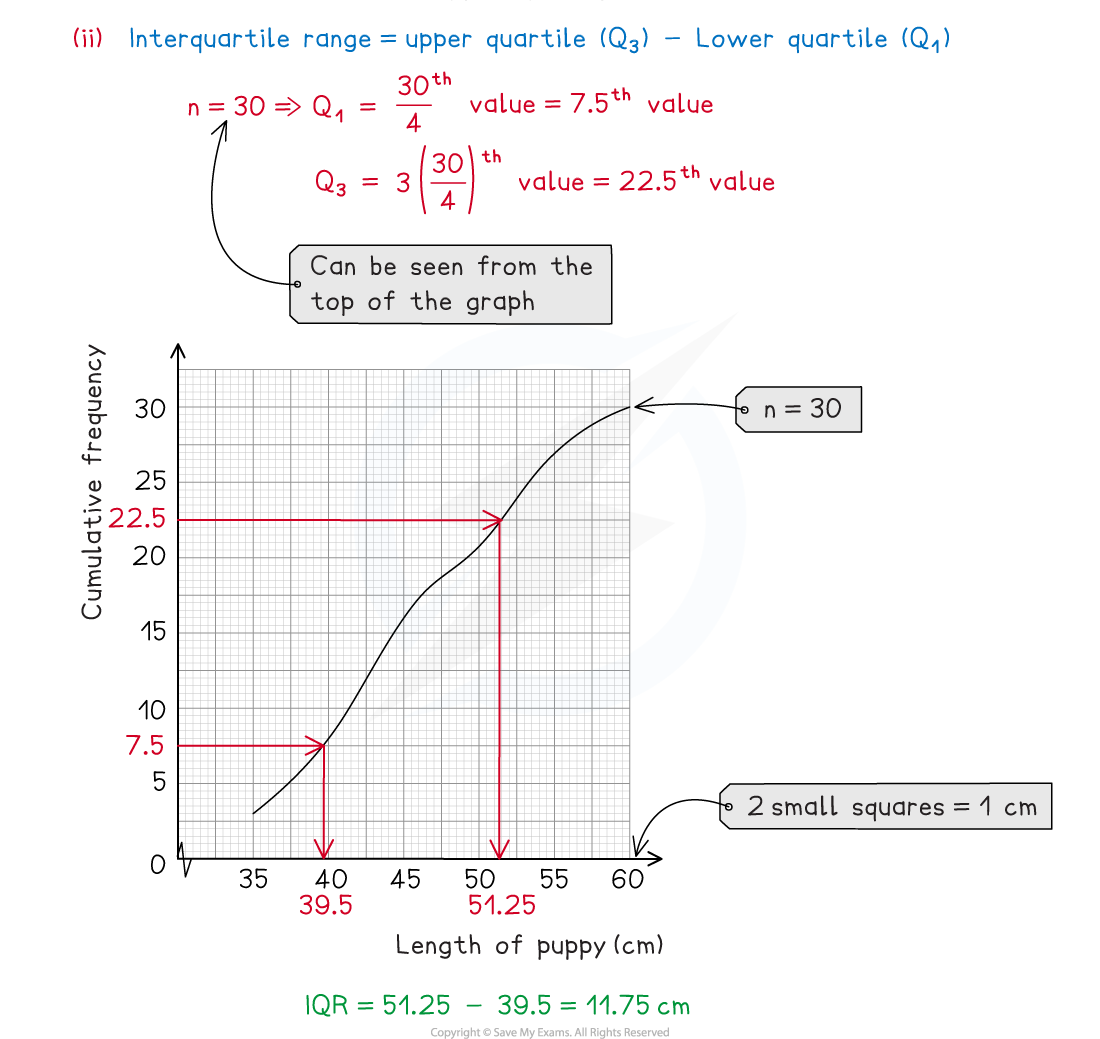- 翰林提供学术活动、国际课程、科研项目一站式留学背景提升服务!
- 400 888 0080
AQA A Level Maths: Statistics复习笔记2.2.2 Box Plots & Cumulative Frequency
Box Plots
What is a box plot?
- A box plot is a graph that clearly shows key statistics from a data set
- It shows the median, quartiles, minimum and maximum values and outliers
- It does not show any other individual data items
- The middle 50% of the data will be represented by the box section of the graph and the lower and upper 25% of the data will be represented by each of the whiskers
- Any outliers are represented with a cross on the outside of the whiskers
- If there is an outlier then the whisker will end at the value before the outlier
- Only one axis is used when graphing a box plot
- It is still important to make sure the axis has a clear, even scale and is labelled with units
- Box plots are often used for comparing two sets of data
- Both box plots will be drawn one above the other on the same scale on the x-axis
- They are useful for comparing data because it is easy to see the main shape of the distribution of the data from a box plot

The key features of a box plot
Worked Example
The incomplete box plot below shows the tail lengths in cm of some students’ pets.

(i)Given that the median tail length was 21 cm, complete the box plot.
(ii)Find the range and interquartile range of the tail lengths.


Exam Tip
- Remember a box plot is a graph and should be treated like one, even though there is only one axis. It should have a title, a clear, even scale that is labelled with units if there are any. If drawing two box plots on the same axis label each one clearly.
Cumulative Frequency
What is a cumulative frequency graph?
- A cumulative frequency graph is used with data that has been organised into a grouped frequency table
- The cumulative frequency graph can be used to find estimates of percentiles and quartiles
- As the data is grouped, it is not possible to find the actual values of these statistics
What are the main features of a cumulative frequency graph?
- A cumulative frequency graph considers how much data there is up to a certain value, including the data in that group and the one below
- Cumulative frequency will always be plotted on the y – axis
- Consider the scale carefully because this will usually be a large number
- You may be asked to add to one or both axes, remember to label both axes clearly and include units on the x – axis if they are needed
- The cumulative frequency is calculated by adding the frequency in each group, or class, to the frequency in the ones before
- This is essentially accumulating the frequencies as you go
- The cumulative frequency for each class must be plotted against the upper boundary of each corresponding class
- The cumulative frequency that corresponds with each upper boundary will not only consider the frequency of the data in that class, but all of the data in the groups below it too
- When the points have been plotted they should be joined up with a smooth curve
- However, some may be joined with straight lines from point to point
How do we read statistics from a cumulative frequency graph?
 Worked Example
Worked Example




Exam Tip
- If you are asked to read values from your graph make sure you use a ruler and mark the lines on clearly to show where you took your readings from. Remember that the graph shows the accumulated frequencies so if you need only the frequency you may need to subtract the previous value.
转载自savemyexams

早鸟钜惠!翰林2025暑期班课上线

最新发布
© 2025. All Rights Reserved. 沪ICP备2023009024号-1








